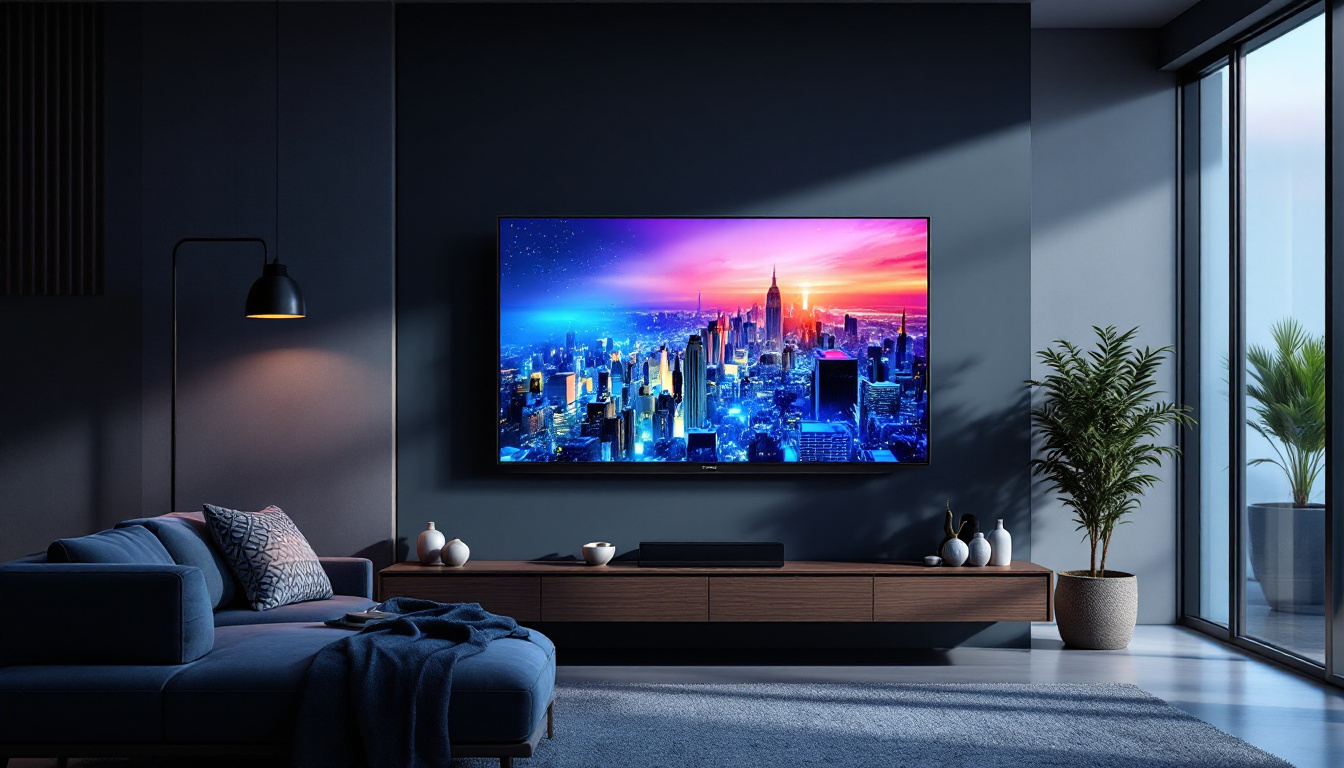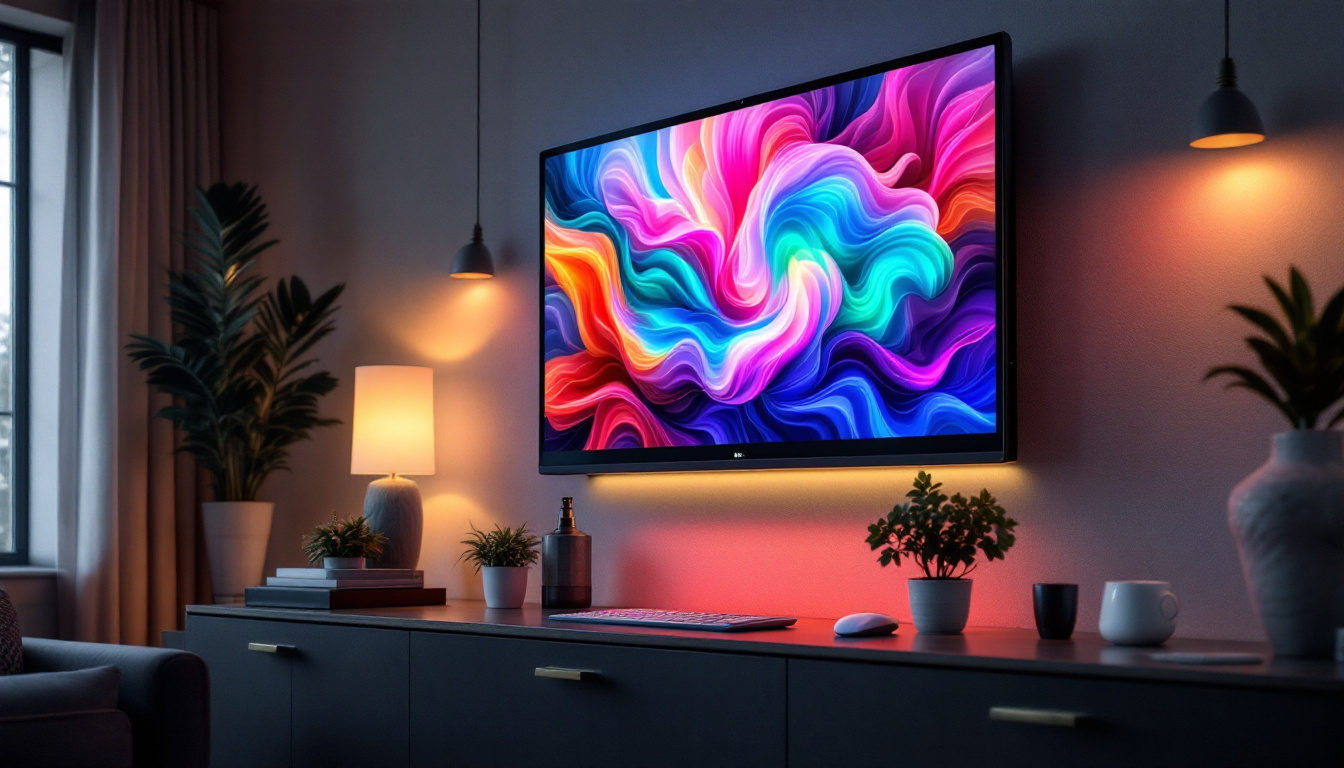Clear LCD Screen: LED Display Explained
In the modern world, screens are ubiquitous. From smartphones to televisions, the technology behind these displays has evolved significantly. Among the most common types of displays are LCD (Liquid Crystal Display) and LED (Light Emitting Diode) displays. While these terms are often used interchangeably, they refer to different technologies that work together to produce the vibrant images we see today. This article aims to clarify the distinctions between LCD and LED displays, explore their functionalities, and highlight their applications.
Understanding LCD Technology
Liquid Crystal Display (LCD) technology is a widely used method for producing images on screens. It utilizes liquid crystals, which are substances that exhibit properties between those of liquids and solid crystals. The technology relies on a backlight to illuminate the liquid crystals, which manipulate light to create visible images. This innovative approach has revolutionized the way we interact with electronic devices, providing clearer visuals and more efficient energy consumption compared to older technologies like cathode ray tubes (CRTs).
The Basics of LCD Operation
At the core of an LCD screen are two layers of polarized glass, with liquid crystals sandwiched in between. When an electric current passes through the liquid crystals, they align in such a way that they either block or allow light to pass through. This manipulation of light creates the images we see on the screen. The backlight, typically composed of fluorescent tubes or LEDs, provides the necessary illumination. The precision in the alignment of these liquid crystals is crucial, as even the slightest misalignment can lead to distortions in the displayed image.
One of the notable advantages of LCD technology is its ability to produce sharp images with excellent color accuracy. This makes it a popular choice for a wide range of applications, from computer monitors to televisions. Additionally, LCD screens are relatively lightweight and thin, making them ideal for portable devices. The energy efficiency of LCDs also contributes to their popularity, as they consume less power than many alternative display technologies, which is especially beneficial for battery-operated devices.
Types of LCD Displays
There are several types of LCD displays, each with its unique characteristics. The two most common types are Twisted Nematic (TN) and In-Plane Switching (IPS). TN panels are known for their fast response times, making them suitable for gaming. However, they often suffer from limited viewing angles and color reproduction. On the other hand, IPS panels provide better color accuracy and wider viewing angles, making them ideal for professional work and media consumption. The advancements in IPS technology have led to the development of variants such as Advanced High-Performance In-Plane Switching (AH-IPS), which further enhance color fidelity and reduce power consumption.
Another type of LCD technology is Vertical Alignment (VA), which offers a balance between the two. VA panels provide better contrast ratios than TN panels while maintaining decent color reproduction. Each type of LCD has its strengths and weaknesses, making the choice dependent on the intended use. For instance, while gamers might prefer the rapid response of TN panels, graphic designers and photographers often lean towards IPS displays for their superior color accuracy. Moreover, the emergence of newer technologies like Quantum Dot and Mini-LED is pushing the boundaries of what LCDs can achieve, promising even richer colors and deeper blacks, thus enhancing the overall viewing experience.
What is LED Display?
LED displays, or Light Emitting Diode displays, are often confused with LCDs due to their similar appearance. However, the key difference lies in the technology used for backlighting. While traditional LCDs use fluorescent backlights, LED displays utilize light-emitting diodes to illuminate the screen. This distinction leads to several advantages in terms of performance and efficiency.
How LED Displays Work
LED displays function by using an array of tiny light-emitting diodes that can produce light in various colors. These diodes can be arranged in different configurations, such as edge-lit or full-array backlighting. In edge-lit displays, LEDs are placed along the edges of the screen, while full-array displays have LEDs distributed across the entire back panel. This arrangement allows for more uniform lighting and improved contrast.
One of the primary benefits of LED technology is its energy efficiency. LED displays consume less power than traditional LCDs, making them more environmentally friendly and cost-effective over time. Additionally, LED displays can achieve higher brightness levels, which enhances visibility in well-lit environments.
Benefits of LED Displays
LED displays offer several advantages over traditional LCDs. One of the most significant benefits is their ability to produce deeper blacks and more vibrant colors. This is due to the precise control of the light emitted by the diodes, allowing for better contrast ratios. As a result, images on LED displays appear more dynamic and lifelike.
Moreover, LED technology contributes to a thinner and lighter design, making it easier to integrate into various devices. This has led to the proliferation of LED displays in everything from smartphones to large-scale digital billboards. The improved durability of LED technology also means that these displays are less prone to damage, which is particularly important for portable devices.
Comparing LCD and LED Displays
While both LCD and LED technologies are widely used in display devices, understanding their differences is crucial for consumers and professionals alike. The comparison can be broken down into several key aspects, including image quality, energy efficiency, and cost.
Image Quality
When it comes to image quality, LED displays generally outperform traditional LCDs. The superior contrast ratios and color accuracy of LED technology result in more vibrant and lifelike images. This is particularly noticeable in darker scenes, where LED displays can produce deeper blacks compared to their LCD counterparts.
However, it is essential to note that not all LED displays are created equal. The quality of the display can vary significantly depending on the manufacturer and the specific technology used. For example, high-end LED displays often feature advanced technologies like local dimming, which enhances contrast by selectively dimming sections of the screen.
Energy Efficiency
Energy efficiency is another critical factor to consider when comparing LCD and LED displays. LED technology is inherently more efficient, consuming less power while providing brighter images. This efficiency translates to lower energy bills and a reduced environmental impact, making LED displays a more sustainable choice.
In contrast, traditional LCDs, especially those using fluorescent backlighting, tend to consume more power. As a result, LED displays are often favored for applications where energy consumption is a concern, such as in large commercial displays or in homes where screens are used for extended periods.
Cost Considerations
Cost is always a significant factor in any purchasing decision. Generally, LED displays tend to be more expensive than traditional LCDs due to their advanced technology and superior performance. However, the price difference has been decreasing over the years as LED technology becomes more mainstream.
When considering cost, it is essential to weigh the initial investment against the long-term benefits. LED displays often last longer and provide better energy efficiency, which can lead to savings over time. Therefore, while the upfront cost may be higher, the overall value may justify the investment.
Applications of LCD and LED Displays
Both LCD and LED displays find applications across various industries, each serving unique purposes based on their characteristics. Understanding these applications can help consumers make informed decisions when selecting a display for specific needs.
Consumer Electronics
In the realm of consumer electronics, both LCD and LED displays are prevalent. LCD technology is commonly used in computer monitors, televisions, and laptops. The sharp image quality and affordability of LCDs make them a popular choice for everyday use.
LED displays, on the other hand, have gained traction in high-end televisions and monitors, especially those designed for gaming or professional graphic work. The enhanced color accuracy and contrast of LED displays make them ideal for applications where visual fidelity is paramount.
Commercial Use
In commercial settings, LED displays are increasingly being utilized for advertising and information dissemination. Digital billboards and signage often employ LED technology due to its brightness and visibility in various lighting conditions. The ability to create dynamic content and change messages quickly makes LED displays an attractive option for businesses.
LCDs are also used in commercial applications, particularly in environments where cost is a primary consideration. For instance, many budget-friendly displays in conference rooms or retail settings still rely on traditional LCD technology.
The Future of Display Technology
The evolution of display technology continues to advance at a rapid pace. Emerging technologies such as OLED (Organic Light Emitting Diode) and MicroLED are gaining attention for their potential to surpass both LCD and LED displays in terms of performance and efficiency.
OLED Technology
OLED displays utilize organic compounds that emit light when an electric current is applied. This technology allows for individual pixels to be turned on or off, resulting in perfect blacks and exceptional color accuracy. OLED displays are already being used in high-end televisions and smartphones, providing a glimpse into the future of display technology.
MicroLED Technology
MicroLED is another promising technology that combines the benefits of LED and OLED. It utilizes tiny micro-sized LEDs to create images, offering high brightness, excellent color accuracy, and low power consumption. MicroLED displays are still in the early stages of development but hold great potential for various applications in the future.
Conclusion
Understanding the differences between LCD and LED displays is essential for making informed decisions in today’s technology-driven world. While both technologies have their merits, LED displays generally offer superior performance in terms of image quality and energy efficiency. As technology continues to evolve, new advancements like OLED and MicroLED will further shape the landscape of display technology, offering consumers even more options for their viewing needs.
Ultimately, the choice between LCD and LED will depend on individual preferences, budget considerations, and specific use cases. As the market continues to innovate, staying informed about the latest developments will ensure that consumers can select the best display technology for their needs.
Discover the Future of Visual Display with LumenMatrix
Ready to experience the ultimate in display technology? LumenMatrix is at the forefront of LED innovation, offering a wide array of advanced LED display solutions that cater to your every need. From vibrant Indoor and Outdoor LED Wall Displays to dynamic Vehicle and Sports LED Displays, and even customizable options like Floor and Transparent LED Displays, LumenMatrix has the perfect solution to elevate your brand’s visibility. Embrace the revolution in visual communication and captivate your audience with unparalleled clarity and impact. Check out LumenMatrix LED Display Solutions today and transform the way you share your message with the world.































